Virginia Keyes Jones Coffey
Virginia Keyes Jones Coffey is one of Cincinnati, Ohio’s most celebrated and humble African American female Civil Rights leaders. She was pivotal in protest campaigns, including the city’s public pools and the opening of Coney Island to African Americans.
Virginia won many awards for her efforts, including the Cincinnati Enquirer newspaper’s “Women of the Year” award in 1968. She was given a Great Living Cincinnatian plaque in 1993. Despite such honors, many people are not aware of her greatness.
Born in 1904 in Wheeling, West Virginia, her parents, Mary and Edward Jones, were determined to find better opportunities. Virginia moved to Grand Rapids, Michigan, when she was four. After she graduated from South High School in Grand Rapids, young Virginia enrolled in Western Michigan University, founded in Kalamazoo, Michigan.
While at Western Michigan University, Virginia quickly became fascinated with education and obtained an undergraduate degree. Eventually, Virginia earned a master’s degree from Western Reserve University in Cleveland, Ohio.
During the early 1920s, Virginia officially moved to Cincinnati, Ohio (the “Queen City”). She got her first job as a teacher at the all-Black Harriet Beecher Stowe School. The Stowe School was a public segregated educational facility that periodically received several hundred dollars in private funds.
Eventually, based on the school’s academic reputation, the Stowe School became the premiere African American school in the city and thus started to attract thousands of students. For example, enrollment in the Stowe School increased from 350 in 1914 to 1,300 in 1922.
Related Article: The History of African Americans in Cincinnati
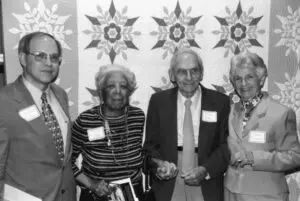
The school curriculum included reading, writing, math, vocational training, and agricultural education. Distressed by the harsh segregationist patterns and discriminatory practices within the city, Virginia almost left Cincinnati.
However, several conversations and many words of encouragement from Theodore “Ted” Berry persuaded her to stay in Cincinnati and join the Cincinnati NAACP, which moved her to stay in the city. Subsequently, Coffey left the teaching profession to devote her full-time efforts to the causes of civil rights and social justice.
Between 1926 and 1931, Virginia joined and served as Secretary for the West End branch of the Young Women’s Christian Association (YWCA), which she held for five years. From 1932 to 1937, Virginia functioned as the organization’s Executive Director.
Related Article: Donald and Marian Spencer, Cincinnati Community Leaders
While working in these positions, she found and worked with many similarly focused organizations to challenge various segregation and discrimination practices throughout the city, especially in education, employment, and housing. Simultaneously, Virginia obtained another undergraduate degree, but this time from the University of Cincinnati, in sociology.
In 1941, Virginia married William A. Coffey, a longtime advocate for the YWCA and youth development programs throughout Cincinnati.
After a three-year break from community advocacy upon marriage, Virginia became a youth worker and Director of Christian Education for the Carmel Presbyterian Church of Cincinnati. Simultaneously, she organized the city’s first African American Girl Scout troop. Virginia also developed and implemented a comprehensive plan to integrate Cincinnati’s YWCA branch on all levels during this period.
Related Article: Ted Berry, First African American Mayor of Cincinnati
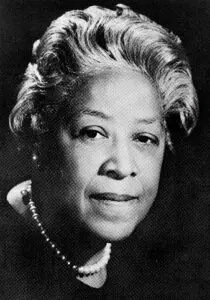
As a result of her work in these areas, in 1948, Virginia Coffey was offered and accepted a position as Assistant Director of the Mayor’s Friendly Relations Committee (MFRC). In 1943, this Committee emerged because of the various racial tensions and urban upheavals that developed throughout the nation during World War II.
The belief was that this Committee would prevent such disturbances in Cincinnati. As a result, the MFRC stated its primary goal “to study and work out the problems connected with promoting harmony and understanding among the various racial, industrial, religious, and other groups in the community.”
Coffey remained in this position for fourteen years and spent most of her time working with many public and private organizations to pressure the local government to enact laws to ensure racial equality and social justice for the city’s African American residents.
Related Article: Jennie D. Porter, First African American woman school principal in Cincinnati
During these years, Coffey led several protest campaigns in the city, such as the movement to integrate the city’s swimming pool, starting at the Owl’s Nest Park in O’Bryonville in 1950.
In 1962, Coffey resigned from her position at the MFRC to become a Community Relations Supervisor at the Seven Hill Neighborhood Houses, where she worked in three neighborhoods – Avondale, Riverview, and the West End.
The Seven Hill Neighborhood Houses agency developed because of the merger between the Findlay Market Neighborhood House and the Riverview Neighbor House groups during the 1960s. Coffey’s new organization was not complicated because she had previously served on both groups’ boards.
Related Article: Why so many African Americans have roots in the West End of Cincinnati
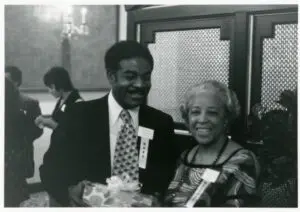
However, years as the Executive Director of the Memorial Community Center, with locations in both Over-the-Rhine and Mount Auburn, established during the mid-1960s, provided the most challenges for Coffey.
Coffey had to develop knowledge and understand the needs of newly arriving Appalachian and African American residents.
But Coffey’s experience as a member of the Appalachian Council of Greater Cincinnati and her background working with many African-American-led organizations gave her the knowledge and skills needed to do her job with great precision.
Related Article: Marjorie Parham, First African American woman publisher in Cincinnati
In 1968, the Cincinnati Human Relations Commission offered Coffey the opportunity to return to their organization. She quickly accepted the Executive Director’s position and became the first African American woman to hold such a title.
Coffey revitalized the Human Relations Commission and developed it into a resource facility that sought to decrease racial tension.
In 1974, Coffey left the CHRC to become a “human relations consultant.” But she was quickly recruited by Dr. Warren Bennis, who served as the President of the University of Cincinnati (UC) to help develop and implement a comprehensive plan for racial inclusion and equality.
Related Article: Lucy Oxley, MD, first African American graduate from the University of Cincinnati School of Medicine
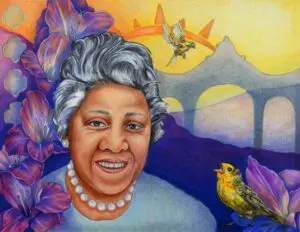
Coffey took on her new role with the vigor and passion she used for over twenty years in similar positions. As a tribute to her service, in 1977, President Bennis awarded Coffey the “President’s Award for Excellence.”
Coffey continued her work to make racial equality and social justice for thousands of African Americans in Cincinnati.
While serving as a consultant for UC, Coffey was on the Board of the Hamilton County Welfare Department, was a member of the President’s Council at Xavier University, and the Advisory Council of Cincinnati Community Chest (today known as United Way). She also was a member of the Cincinnati (OH) Chapter of The Links, Incorporated, and Alpha Kappa Alpha Sorority, Inc. She was also on the Board of the Walnut Hills Area Council.
Despite her death at age 99, Coffey’s legacy and accomplishments live on within the various agencies, commissions, and committees. She is reflected in the people she served as a trailblazer for civil rights and social justice in Cincinnati, Ohio, the “Queen City.”
Further Readings
Virginia Coffey Papers, 1935 – 1984 (Cincinnati Historical Society Library and Archives – Cincinnati Museum Center)
Adeline Harris Collection (Cincinnati Historical Society Library and Archives – Cincinnati Museum Center)
“Mrs. Berry Submits Report on Swimming Pool Incident,” Cincinnati Enquirer, 27 June 1950
Josten, Margaret, “No-Nonsense Beliefs Mark CHRC Chief – Mrs. Coffey Gets Commission Post,” Cincinnati Enquirer, 5 January 1968
Horstman, Berry M. “Virginia Coffey – In Fight for Civil Rights, She Was Out Front,” Cincinnati Enquirer, 24 March 1999
Goodman, Rebecca. “Virginia Coffey Fought against Discrimination,” Cincinnati Enquirer, 30 August 2003
About the author, Eric R. Jackson
Eric R. Jackson holds a doctorate from the University of Cincinnati. He is a history and Black studies professor in the Department of History and Geography at Northern Kentucky University.
He has over 50 publications, including articles in Africology: The Journal of Pan African Studies, Journal of African American History, and Journal of World Peace.
[email protected]
859-572-5816
The Voice of Black Cincinnati is a media company designed to educate, recognize, and create opportunities for African Americans. Want to find local news, events, job postings, scholarships, and a database of local Black-owned businesses? Visit our homepage, explore other articles, subscribe to our newsletter, like our Facebook page, join our Facebook group, and text VOBC to 513-270-3880.
Images provided by Jamie Schorsch, Urban Appalachian Community Coalition, and Cincinnati Museum Center
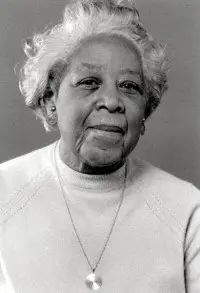
Comments are closed.